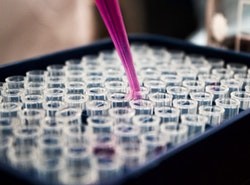
TYPES OF BREAST CANCER
There are many different types of breast cancer. Tumours can be non-invasive or invasive. Non-invasive breast cancer is contained inside the milk ducts or lobules. Invasive breast cancer means that the cancer has spread beyond the ducts/lobules into the surrounding tissues.
Types Of Non-invasive Breast Cancers
Carcinomas in situ (‘in situ’ meaning ‘in place’) are abnormal cells in the breast. The condition is considered non-invasive. However, over time, carcinomas in situ may eventually become invasive breast cancer. Common types of carcinomas in situ in the breast include:
Ductal carcinoma in situ (DCIS)
DCIS occurs when cells within the duct are abnormal. The abnormal cells have not spread to other tissues outside the duct. DCIS is a non-invasive breast cancer. Because DCIS may become an invasive cancer over time, women are generally recommended treatment.
Lobular carcinoma in situ (LCIS)
LCIS occurs when cells within the lobules (milk-producing glands) of the breast are abnormal but they do not grow through the walls of the lobules. Although LCIS is not considered cancer, it increases the risk of developing breast cancer. Therefore, women with LCIS will usually have regular check-ups such as mammograms or other scans.
Types Of Invasive Breast Cancers
The most common types of invasive breast cancer are:
Invasive ductal carcinoma (IDC)
IDC is the most common type of breast cancer. Approximately 8 out of 10 (or 80%) of all breast cancers are invasive ductal carcinomas. IDC begins in the ducts and grows into nearby breast tissues. If not treated, IDC can spread to the lymph nodes and possibly to other areas of the body.
Invasive lobule carcinoma (ILC)
ILC is the second most common type of breast cancer. About 1 in 10 breast cancers is an ILC. ILC starts in the lobules (milk-producing glands) in the breast and invades nearby breast tissue. If not treated, ILC can spread to the lymph nodes and possibly to other areas of the body.
Less common forms of breast cancer
Inflammatory breast cancer (IBC)
IBC is a rare and aggressive form of invasive breast cancer. IBC has some symptoms of inflammation such as redness and swelling, due to cancer cells blocking lymphatic vessels in the skin. Other symptoms of IBC include dimpling or thickening of the skin in the breast (like the skin of an orange); some may have a lump in their breast or armpit, experience a pain in the breast or nipple, discharge from the nipple or a nipple that turns inwards (inverted nipple).
Paget’s disease of the nipple
This is a rare form of breast cancer that affects the nipple and the area around the nipple (areola). Many people with Paget’s disease also have breast cancer in other parts of the breast. The main signs of Paget’s disease is a change in the nipple and/or areola area of the breast including the area becoming hard, lumpy or crusty; redness, discharge or bleeding from the nipple and appearance of a lump.
Phyllodes tumour
Phyllodes tumours are rare breast cancers that start in the connective tissue of the breast. Most phyllodes tumours are benign (non-cancerous) but about 1 in 4 are malignant (cancerous). The tumours are usually felt as a lump. As phyllodes tumours may be difficult to diagnose by imaging tests (such as a mammogram), surgical removal of the entire tumour may be needed for diagnosis.
Metaplastic breast cancer
Metaplastic breast cancer (MBC) is a rare form of breast cancer accounting for about 1% of all breast cancers diagnosed each year. It is characterised by the variety of cell types that make up the tumour, which can make MBC difficult to diagnose. In addition, MBC may be more aggressive than other types of breast cancers.
Related Research

